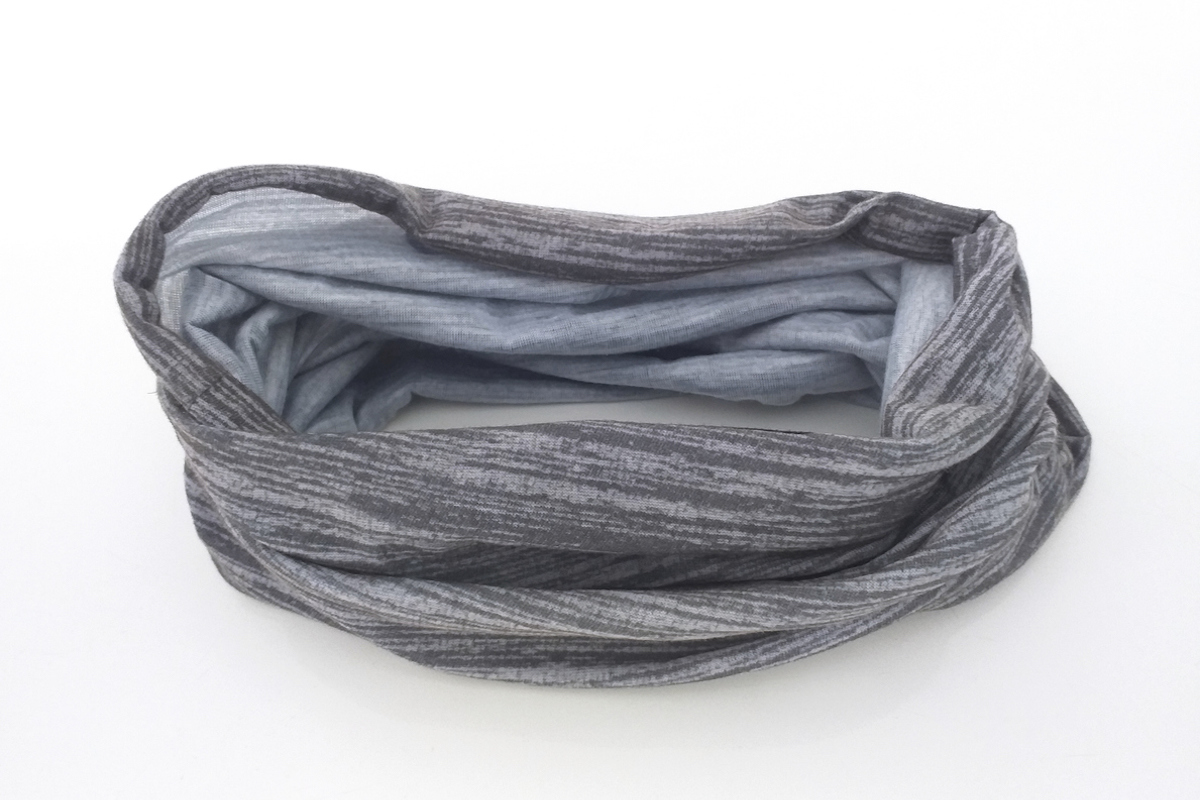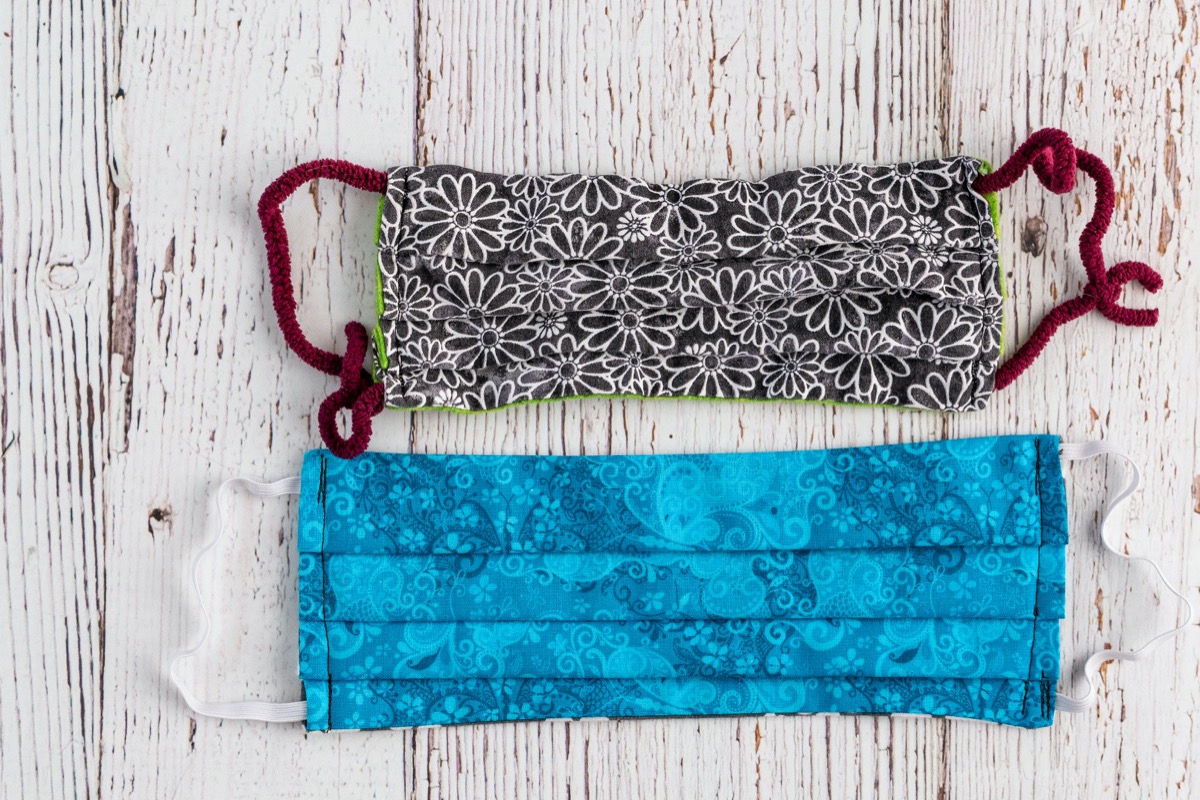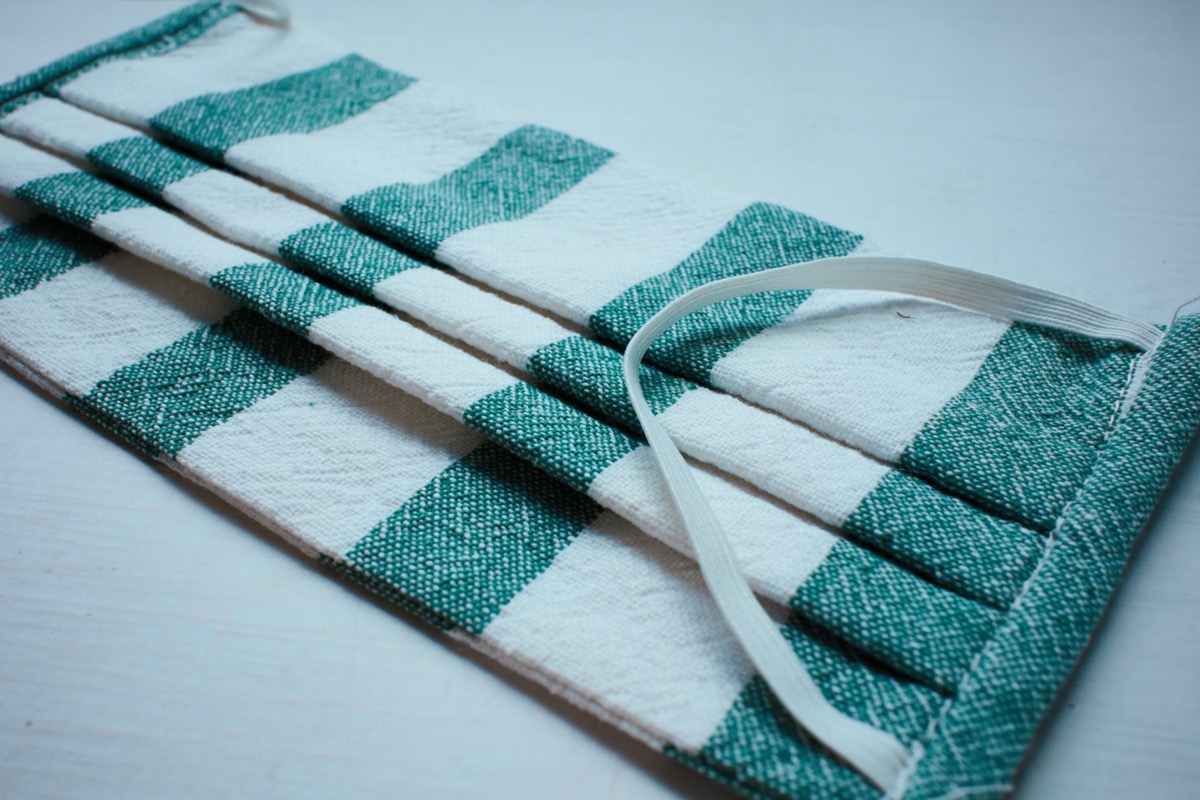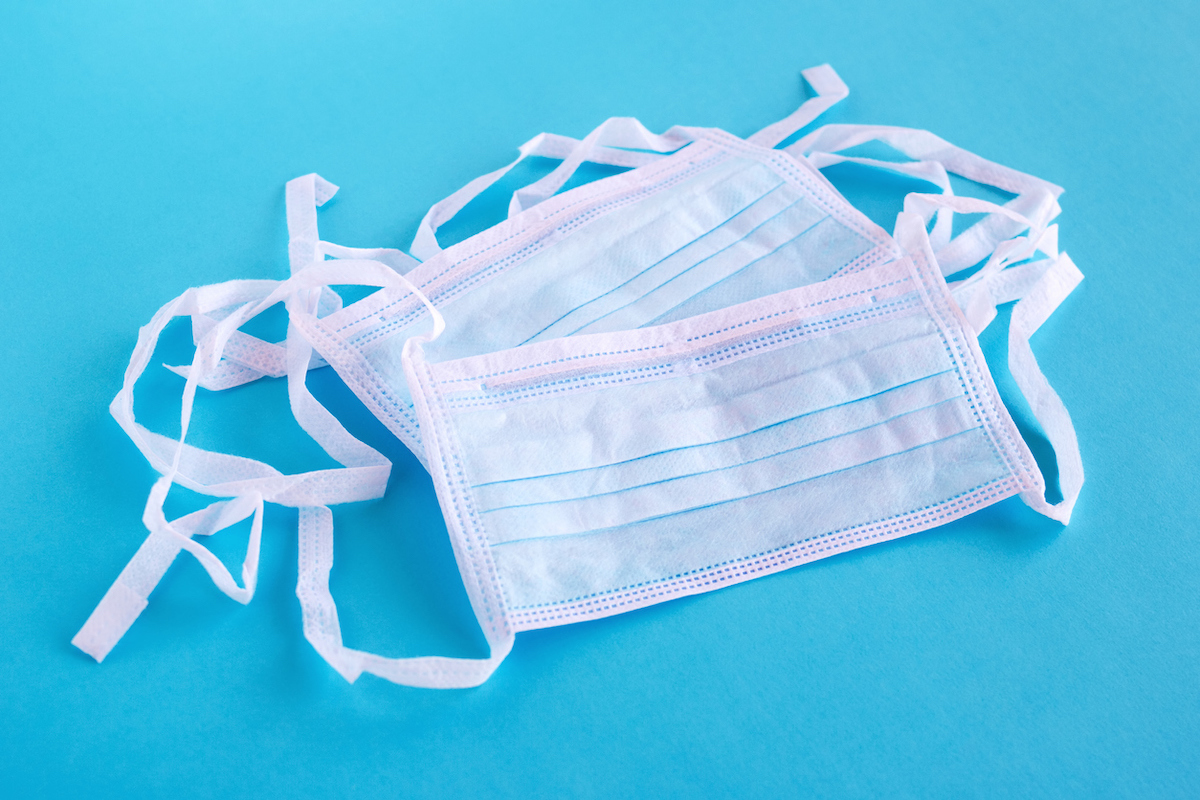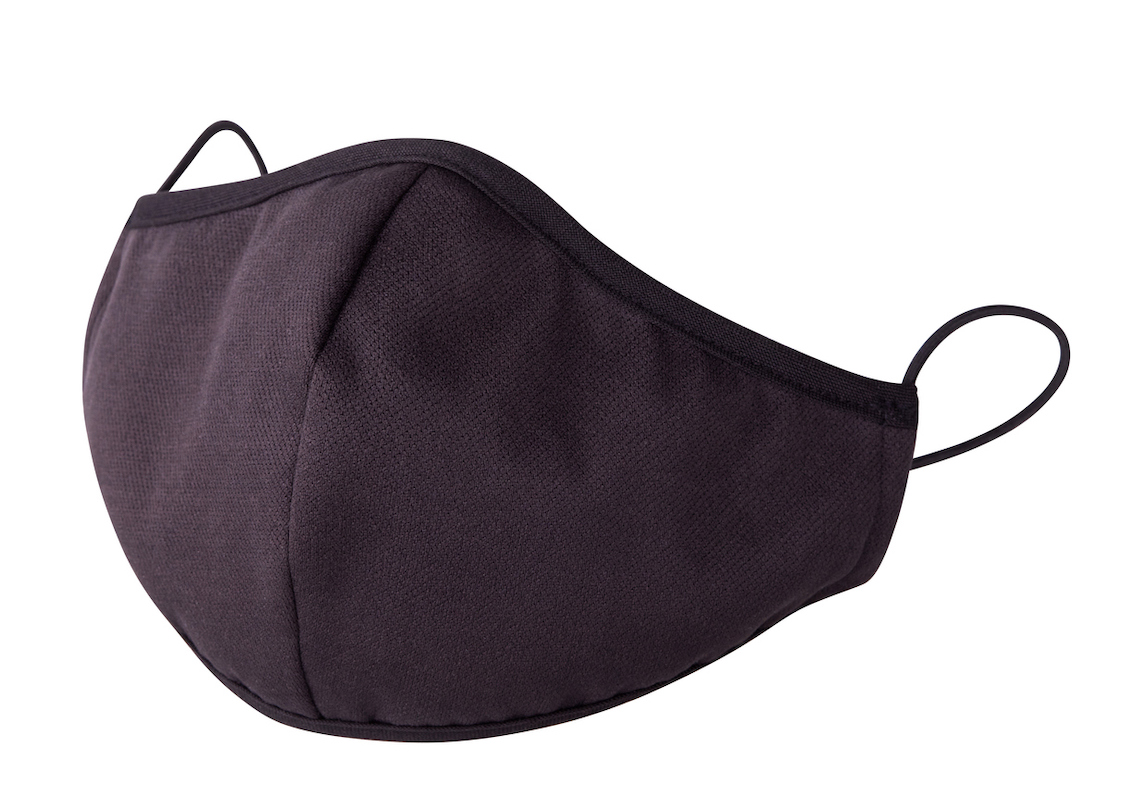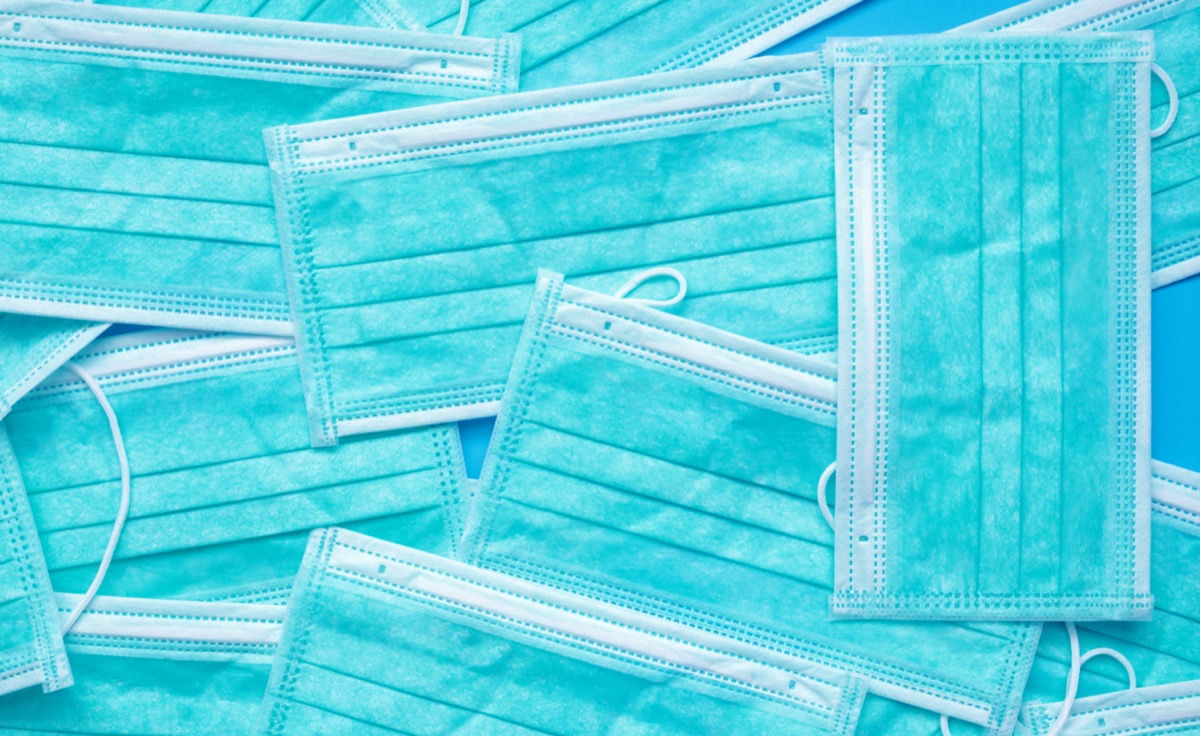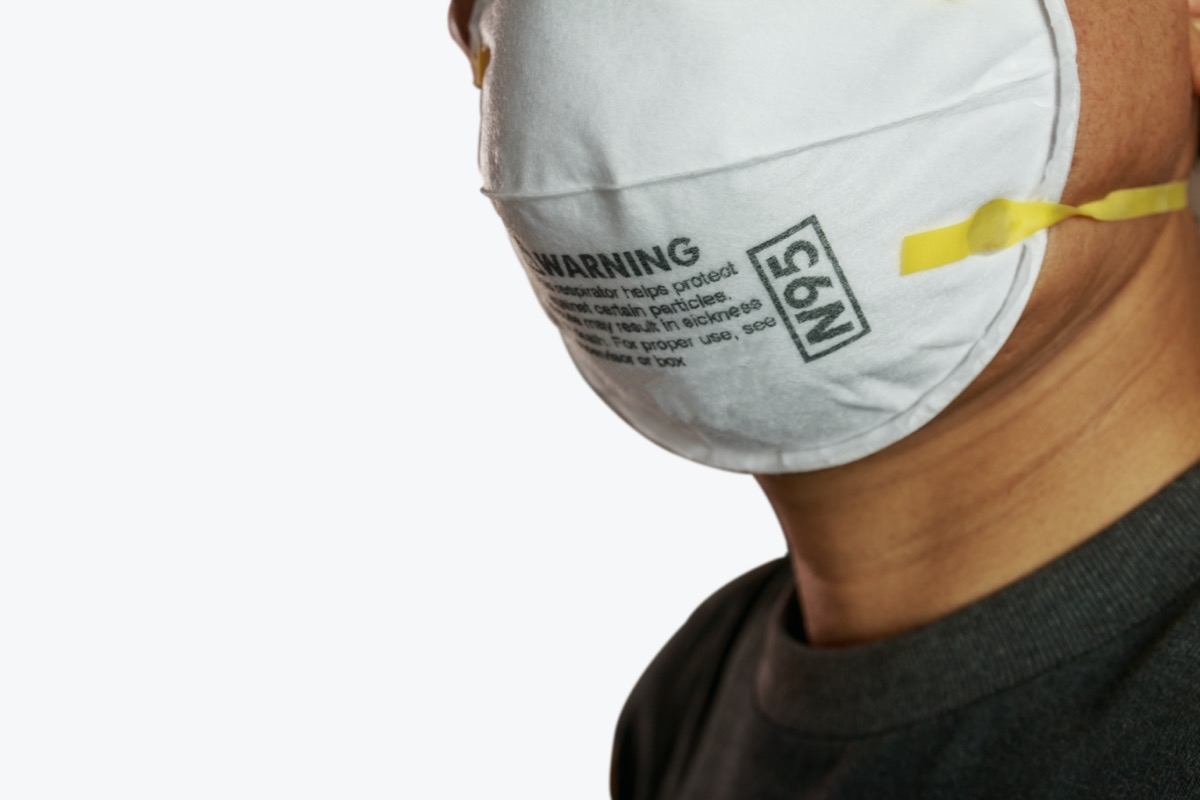Not only did the neck fleece—or neck gaiter, a garment worn by runners and other outdoor sports enthusiasts to keep warm—rank the lowest of the face coverings the researchers tested, it actually generated even more droplets than speaking with no mask on at all. The researchers suspect that it’s because the material diffuses larger droplets, creating more smaller ones. For more on why gaiters don’t work, Here’s Why This Popular Face Mask Alternative Isn’t Really Effective. If you’ve been relying on bandanas you already had lying around the house over buying masks, you should rethink that choice. The efficacy of a bandana varies widely depending on how you tie it to cover your nose and mouth. It produced the broadest range of droplet counts in the study (from .2 all the way to 1.2), suggesting that it’s difficult to know whether your bandana is really protecting the people around you or just serving as a cool accessory. That the knitted mask ranked so low can’t come as a surprise. Any knitted face covering will have visible holes through which respiratory droplets can escape. And for more expert mask guidance, The CDC Now Says You Shouldn’t Wear This One Type of Mask.ae0fcc31ae342fd3a1346ebb1f342fcb Pleated cotton masks are a popular handmade style that are now easy to come by. If you do purchase or make a cotton mask, make sure that it has more than one layer of fabric. As common sense suggests and this experiment proves, a single layer of cotton blocks fewer droplets than two or more layers. A single-layer mask produced with Maxima AT barrier fabric from the medical company Burlington improves a bit on a single-layer cotton mask. Olson-style masks are the kind that have a rounded, almost cone-like shape. They’re also a popular style for homemade COVID face coverings. A double-layer cotton mask in this style works better than a single-layer cotton mask, but it allows for the expulsion of more droplets than a double-layer pleated cotton mask. This could be because an Olson mask doesn’t fit quite as tightly over your nose and mouth. And for tips on how to safely and comfortably protect yourself, here are 10 Genius Face Mask Hacks You Should Know. Face masks with valves are designed to protect the wearer from breathing in harmful particles (say, while doing a home improvement project), but not from expelling them. So, expectedly, a valved N95 ranked lower than one without. And for more on masks with this feature, check out You May Not Be Allowed in a Hospital With This Mask. The researchers tested three different two-layer pleated cotton masks—hence the 14 total masks tested and the 11 on this least. They each produced different amounts of droplets, but all fell somewhere in the middle of the rankings, with the most effective of the three coming in at No. 5. Not all handmade masks are created equal, but—per this study, at least—two-layer cotton pleated masks all provide a decent barrier against respiratory droplets. And for more up-to-date information, sign up for our daily newsletter. The fourth most effective mask in the study was constructed of two layers of polypropylene, which is a thermoplastic polymer that absorbs moisture—the same thing surgical masks are made out of. The difference is that these masks are apron-style, meaning they tie in the back, which makes them slightly less fitted to your face and therefore slightly less efficient at blocking droplets. A three-layer mask with polypropylene serving as a filter between two layers of cotton was a bit more effective than the mask constructed of polypropylene alone. Good news if you have a box of disposable surgical masks on hand: This type of three-layer mask came in at No. 2 in the experiment, with a droplet count that ranged from 0 to .1 across the trials. Finally, the study found that the most effective mask when it comes to blocking the wearer’s respiratory droplets—letting almost none escape—is a fitted N95 mask. (After all, the “95” in this mask’s name comes from the fact that it blocks 95 percent of droplets.) These masks are fitted snugly to the shape of individual wearers’ faces. However, they’re intended for use by medical workers and it’s still recommended that these types of masks are reserved for those on the frontlines as they’re exposed to the virus more frequently than most.
